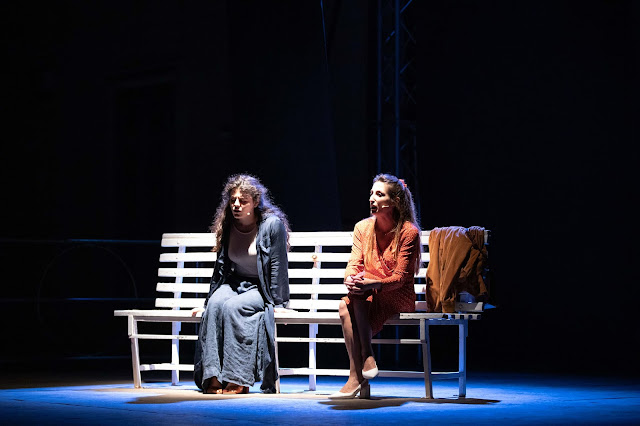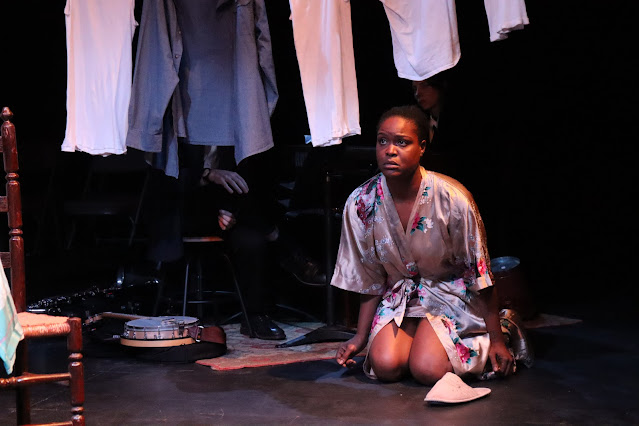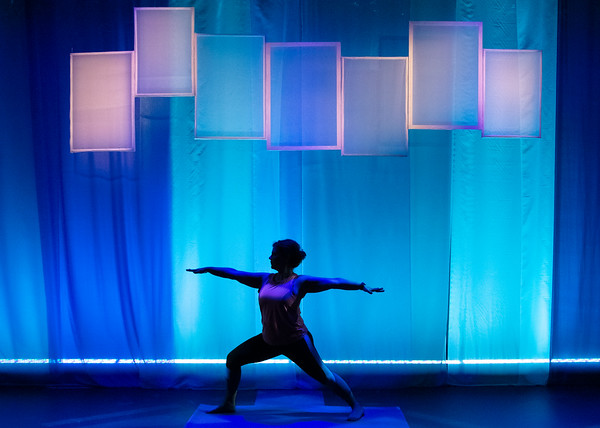Review: "In the Name of Mary" Sees Love Cut Short
In the Name of Mary (Nel Nome di Maria)
Written and directed by Chiara Gambino
Original music by Domenico Gargano
Presented by BABEL at Casa Italiana Zerilli-Marimo’ at NYU (24 W 12th St., Manhattan, NYC), May 6, 2025, and Culture Lab LIC (5-25 46th Ave, Queens, NYC), May 11, 2025
 |
| Alba Sofia Vella and Chiara Gambino. Photo courtesy of Emily Owens PR |
The opening voiceover is the only time that we hear directly from Lillo. The show's focus is Maria, played with passion and humor by Gambino, and it is her perspective, her consciousness that dominates. She is joined, though, by a second woman, an everywoman character, played with equal excellence by Alba Sofia Vella, who is more or less literally drawn into the story and acts like a contrapuntal external monologue-cum-chorus, while remaining generally unacknowledged by Maria herself. Although In the Name of Mary is not straightforwardly chronological, its present day is 1982, and an outline of Lillo and Maria's relationship emerges over the course of the play, including Maria's mother's initial resistance to her daughter dating an older man with a potentially dangerous job. Even leaving aside Lillo's field of employment, Maria herself observes that Palermo can be a dangerous place.
Given this environment and Lillo's job, the fact that Lillo is one of those people who is chronically late imposes an additional layer of worry on Maria, although she feels compelled to conceal such feelings and even tries to see the bright side of Lillo's habitual tardiness, framing is as injecting a bit of adventure and unpredictability into her life. In the play's opening, Lillo includes Maria's sharing a name with the Virgin Mary as a reason that he should marry her, and perhaps her self-sacrificial suffering and, ultimately, loss are where one may find the strongest echoes of her Biblical namesake. Lillo's persistent lateness means that we often see Maria waiting: on a street (where she is compared to a sex worker), in her apartment (in an affecting segment that shows her attempting various distractions as hours pass with no word from Lillo–pacing, dancing, eating an apple–before finally giving in to panic), on a bench. Gambino often delivers lines directly to different spectators, creating a sense of intimate confession intensified by Vella's own onstage reactions. The beaming happiness that Gambino exudes as Maria awaits Lillo during the play's conclusion is all the more tragic as it is so palpable, and even a couple of papier-mâché ice cream cones become invested with emotional weight. At one point, Maria tells us that she feels that something good must always be followed and balanced by something bad; in case she's right, maybe don't walk under any ladders on the way home from seeing In the Name of Mary.
-John R. Ziegler and Leah Richards
More from In Scena! 2025
News: In Scena! Italian Theater Festival NY Announces Venues and Performance Schedule for 2025 Festival
Review: "Alfredino" Taps into an Emotional Wellspring



Comments
Post a Comment